14-4. According to the Mayas
Itzam-Yeh (Ursa Major) was defeated in 28 May in the year
3149 BC. This ought to have shifted the structure of the
Gregorian calendar ahead (as perceived against the fixed star
positions) with around (1842 + 3149) / 26000 * 365¼ = 70 days
or 10 weeks (→ 420 - 350).
28 May (144) should therefore correspond to day 144 + 70 =
214 (August 2).
... The Hawaiian woman who was
interviewed chuckled because the assassination of Captain
Cook coincided with the day we have named All Hearts' Day
- viz. when in February 14 (2-14) the war-god Kuu
returned to power ...

But, as we know, August 14 (8-14)
was day 226 (= 45 + 181) = 214 (August 2) + 12:
 |
 |
 |
 |
|
Eb4-22 (129, 455) |
Eb4-23 |
Eb4-24
(→ 4 * 42 = 168) |
Eb4-25 |
|
manu rere atu |
manu rere |
manu ariga nuku |
henua - kiore |
|
Rere. To jump; to run; to fly.
Rere-taúra, to carry a child astride on
one's shoulder: ku rere-taúra-á i te poki e
te matu'a ki te gao, the mother carries her
child astride her neck. Vanaga. 1. To fly, to
run, to leap, to scale, to be carried away by
the wind; ika rere, flying fish; rere
aruga, to rebound; hetuu rere,
meteor, flying star. Hakarere, to leap. P
Pau.: rere, to soar, to fly; fakarere,
to precede. Mgv., Ta.: rere, to fly, to
leap. 2. To come, to reach to. Mq.: éé mai,
to come. 3. To swerve, to deviate. (4.
Hakarere, to cease, desist, postpone, quit,
vacation; tae hakarere, perseverance.
Mq.: rere, to disappear. 5. Hakarere,
to save, preserve, put, place, reserve, burden,
destine. 6. Hakarere, to abandon,
forsake, give up, depose, expose, leave, omit,
abjure, repudiate; hakarere ki te hau,
uncover the head; hakarere ki te vie, to
divorce, hakarere ki raro, to put down,
tooa te kiko e ivi i hakarere, to strip
off the flesh. Mq.: éé, to run away, to
escape. 7. Hakarere? Ikapotu hakarere,
to abut, to adjoin; e tahi hakarere,
synonym.) Churchill. Vi.: Lele, the end
of a branch farthest from the body of a tree;
leletha, to bend a branch in order to gather
the fruit on it. Churchill 2. In the present
phase of Polynesian lele so much means to
fly that the plainest way of particularizing
birds is to describe them as the flying animals,
manulele. But to manifest that flight, an
exercise or balancing of wings, was by no means
the primordial sense, for how could that give
rise to a description of water in the
water-courses? It will be no end to mass the
several significations which lele
exhibits ... Flight of birds ... Wind drive ...
Meteors ... To leap ... To run ... Flow of water
... To swim ... To sail ... These several
activities are exercised in earth, air, and
water. The common factor is the swift motion.
The means of motion cut no figure. It is an
invisible means in the driving of the wind, the
flash of the meteor silent athwart the sky on
its lethal errand, the slip and slide of the
stream in its deep course, the set of the sea,
the gliding of the canoe upon its surface.
Churchill 2. Atu. Particle
of meaning opposite to that of mai; it
refers to the second or third person, expressing
movement away: ka-avai-atu, give it to
him: he-oho-atu au, I am going there,
after you; i-oho-atu-era, when I had gone
there. Vanaga. 1. a. Directive, of motion from
the speaker. b. Somewhat expressive of the
comparative degree. 2. Pupil; hakaatu,
proof; hare hakaatuga, schoolhouse,
class. 3. (hakaatu), to presage. 4. (hakaatu),
mark, object. Churchill. |
|
VISIBLE CLOSE TO
THE FULL MOON: |
|
Creation of our present world
UKDAH (Knot) =
ι
Hydrae (145.4),
κ
Hydrae (145.5),
SUBRA =
ο
Leonis
(145.8)
ALPHEKKA MERIDIANA
*104.0 = *145.4 - *41.4 |
5
Imix 9 Kumk'u
Rishu A.-13 (Head of
the Lion)
ψ Leonis (146.4),
RAS ELASET AUSTRALIS = ε Leonis
(146.6)
*105.0 = *146.4 - *41.4 |
VATHORZ PRIOR = υ Carinae
(147.9) |
υ¹
Hydrae (148.4),
RAS ELASET BOREALIS (Northern Head of the Lion)
=
μ
Leonis
(148.7)
*107.0 = *148.4 - *41.4 |
 |
|
Aug 13 (225 =
141 + 84) |
14 (45 + 181) |
15 (227 → 22
/ 7 → π) |
16 |
|
"July 3 (184
= 225 - 41) |
4 |
5 |
6 (*107) |
|
JUNE 10 (161
= 225 - 64) |
11 |
12 |
13 (*84) |
|
... Midsummer is the flowering season of the oak,
which is the tree of endurance and triumph, and like
the ash is said to 'court the lightning flash'. Its
roots are believed to extend as deep underground as
its branches rise in the air - Virgil mentions this
- which makes it emblematic of a god whose law runs
both in Heaven and in the Underworld ... The month,
which takes its name from Juppiter the oak-god,
begins on June 10th and ends of July 7th. Midway
comes St. John's Day, June 24th, the day on which
the oak-king was sacrificially burned alive. The
Celtic year was divided into two halves with the
second half beginning in July, apparently after a
seven-day wake, or funeral feast, in the oak-king's
honour ...
.jpg) |
|
THE SUN: |
|
Mahar sha hi-na
Shahū-26 (Western One in the Tail of the Goat)
NASHIRA
(Fortunate One) =
γ Capricorni
(328.0),
ν
Oct. (328.3),
AZELFAFAGE (Tail of the Hen) =
π¹
Cygni,
κ
Capricorni (328.7) |
Arkat sha hi-na
Shahū-27 (Eastern One in the Tail of the Goat)
ENIF (The Nose) =
ε
Pegasi, ERAKIS =
μ
Cephei
(329.2),
46 CAPRICORNI, JIH (the Sun) =
κ
Pegasi
(329.3),
ι
Piscis Austrini (329.4),
λ
Capricorni
(329.6),
ν
Cephei (329.7),
DENEB ALGIEDI
=
δ
Capricorni
(329.8)
*288.0 = *329.4 - *41.4 |
θ
Piscis Austrini (330.1),
λ
Oct.
(330.7) |
KUH (Weeping)
=
μ
Capricorni (331.4),
γ
Gruis (331.5)
*290.0 = *331.4 - *41.4 |
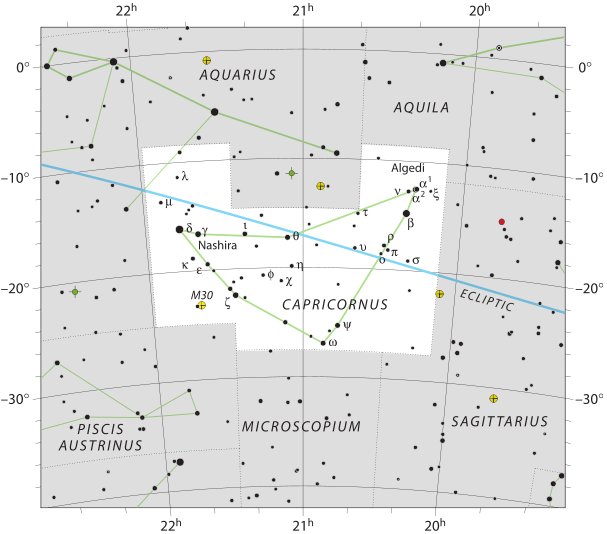
Could the First 3-stone (tau-toru) Place
refer to the string (tui) of stars
('stones') between
γ and λ (→ γ inverted)?
 |
Possibly this means we should somehow
manipulate the dates to make them fit. For instance could we add
16 to August 2 (214) in order to reach August 18 (230). On Hawaii the ideal day for
Breaking of the Coconut
was 3 months
later in November 18, and when one of the Sun's cardinal points
was changed all the rest of them had to follow suit.
Then we could change
from the Gregorian 0h at day 80 to the Julian spring equinox in day 84,
in which case also the other cardinal dates should be
correspondingly adjusted with 4 days. The distance 230 days
would therefore shrink to 230 - 4 = 226 (*146) → 2 /
5 * 365.
With Itzam-Yeh identified
(by the Mayas) as Ursa Major we could then contemplate how the
Full Moon at JULY 1 (*166, August 3) might fit into the
framework of this
great cosmic puzzle:
|
 |
 |
*7 |
 |
 |
|
tapa mea |
tapamea |
i te tino |
tao |
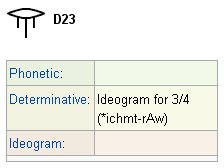 |
JUNE 23 (114) |
JULY 1 (122) |
 |
|
Aug 27 (*159) |
Loin (*166) |
|
"July 17
(*118) |
Sept 3 (246) |
|
...
On the late afternoon of the
June solstice, towards sunset, we reached Ahu
Akivi near the centre of the western side of
Easter Island. This is an inland site, 3
kilometers from the coast. Like Ahu Nau Nau
at Anakena, it has seven Moai, but
in this case none of them have topknots and,
uniquely, all face west towards the sea - which
is clearly visible from the high point on which
they stand. There is a
curious tradition concerning these grizzled,
otherworldly statues, solemn and powerful, with
their blank, aloof eye-sockets gazing out over
the limitless ocean. Like most of the other
Moai of Easter Island the local belief is
that they died, long ago, at the time when
mana - magic - supposedly fled from the
island never to return. However, in common with
only a very few of the other Moai, it is
believed that these particular statues still
have the power, twice a year, to transform
themselves into aringa ora -
literally 'living faces' - a concept startingly
similar to the ancient Egyptian notion that
statues became 'living images' (sheshep ankh)
after undergoing the
ceremony of the 'opening of the mouth and the
eyes' ...
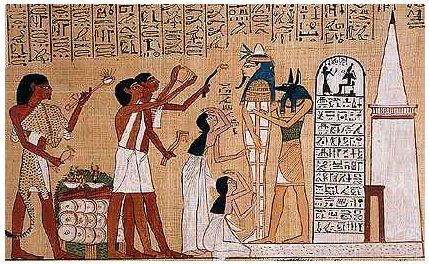 |
 |
 |
 |
 |
 |
 |
|
Eb4-32 (465) |
Eb4-33 |
Eb4-34 |
Eb4-35 |
Eb4-36 |
Eb4-37 (12 * 12) |
|
manu hiri ki te ariki |
e ariki |
manu rere |
tapamea |
ka hokohuki - ma tere o te kahi |
te matakao - e ua |
|
Hiri 1. To braid, plait,
tress (hair, threads). 2. To rise in
coils (of smoke). 3. To hover (of
birds). Vanaga. 1. To elevate, to
mount. Hiriga, to elevate;
elevation, mounted, ascension,
assumption, declivity; hiriga
mouga, hillside. Hirihiri,
a swing, seesaw. P. Pau.: iri,
to be put up in a place, to lodge.
Mgv.: iri, placed in a higher
position than the observer, as a box
on a high shelf. Ta.: iri, to
lodge or stick up in a place. The
germ signification is 'above,
higher'. In Samoa it is used most
commonly in a tropical sense, but
the primal sense is sufficiently
retained in the signification to
lodge, to stick in, to show general
concord with Rapanui and particular
harmony with the other languages of
Southeast Polynesia. 2. To make a
bag; taura hiri, to make a
cord; rauoho hiri, plaited
hair; hirihiri, frizzed;
rauoho hirihiri, lock of hair. P
Mgv.: hiri, wo weave, to
plait; akahiri, to make a
mat. Mq.: hii, large plait of
coconut fiber. Ta.: firi, to
plait, to braid. When we interpret
in the sense of local conditions
Père Roussel's definition 'to make a
bag' the concord is perfect, for
bags are woven. The germ sense is
plainly the act of twining in and
out, over and under, which, with
specific differences due to manner
and material, may result in plaiting
or weaving; see hiro. 3. To go, to
walk, to voyage, to arrive, to
appear; hiri tê reka, to go
without noise; hiri koroiti,
to go softly; hiri tahaga no mai,
to go without a halt. Hiriga,
voyage, journey; hiriga hakapa,
to go by twos; hiriga hipa,
to go obliquely; hiriga kokekoke,
to go by sudden steps; hiriga
okorua, to go by twos; hiriga
tahataha to go across; hiriga
tekiteki, to go on hopping;
hiriga tê mataku, to go on
fearlessly; hiriga totoro, to
go on all fours; hiriga varikapau;
to go in a ring; hiriga veveveve,
to go boldly. Churchill. Pau.:
Hirinaki. 1. To incline, to
slope. Ta.: hirinai, to rest
upon. Ma.: irinaki, to rest
upon. 2. To be apprehensive. Ta.:
hirinai, to apprehend.
Churchill. Mgv.: Aka-hiria,
to enquire after. Sa.: sili,
to ask, to demand. Hirihiri,
to fish for turtle. Mq.: fiifiii,
a small net for taking turtle.
Churchill.
Ki. To,
towards (a place, a person); after
(time); for, in order to... Vanaga.
Kî. To say, to speak; word,
language; will, wish (verbally
expressed): e-hakarogo koe ki te
kî o toou matu'a, obey you
father's will. Vanaga. 1. In,
toward, to, for, at; ki ra,
there; ki ra hoki, exactly
there; ki aho, outside; ki
roto, within, into, inside,
among. 2. In order that. 3. To say,
to speak, to chat, to pronounce, to
respond; argument, conversation,
description, doctrine, expression,
word, relation; ki veveveve,
voluble; ki vaiapuga,
nonsense, to speak much and say
nothing; ki ihoiho, to speak
forcefully. Churchill.
Matakao. Oar,
paddle; clitoris. Churchill. |
|
VISIBLE CLOSE TO
THE FULL MOON: |
|
ALGIEBA (The Mane) = γ
Leonis,
q Carinae (155.5) |
TANIA AUSTRALIS (Southern Gazelle) =
μ
Ursae Majoris (156.0), GHOST OF
JUPITER = NGC3242 Hydrae
(156.8) |
Extended Net-26b (Ox)
μ
Hydrae
(157.1) |
Maru-sha-arkat-Sharru-15 (4th Son
behind the King)
SHIR (Possessing Luminous Rays) =
ρ
Leonis
(158.9) |
p Carinae (159.3) |
φ Hydrae (160.3) |
|
SOLSTICE |
22 |
23 |
JUNE 24 (175) |
25 |
26 |
|
Aug 24 (236) |
25 |
26 |
27 (175 + 64) |
28 |
29 |
 |
 |
|
Eb4-38 |
Eb4-39 |
|
erua age rae |
|
No star listed
(161 →
φ) |
VATHORZ POSTERIOR = θ Carinae
(162.1),
PEREGRINI = μ Velorum,
η Carinae
(162.6) |
|
Aug 30 |
31 |
 |
 |
 |
 |
 |
 |
|
Eb4-40 |
Eb4-41 |
Eb4-42 |
Eb5-1 (326 + 150) |
Eb5-2 (477) |
Eb5-3 (152) |
|
manu i ruga o te take |
manu rere |
E manu |
i te tino |
ku tere mai |
henua - kiore |
|
Take.
The Marquesans are the
only people who own to a distinctive
national name, and retain a
tradition of the road they travelled
from their original habitat, until
they arrived at the Marquesan
Islands. They call themselves te
Take, 'the Take nation'.
Fornander. Take, Tuvaluan for
the Black Noddy (Anous Minutes).
The specific epithet taketake
is Māori for long established,
ancient, or original. In the Rapa
Nui mythology, the deity
Make-make was the chief god of
the birdman cult, the other three
gods associated with it being
Hawa-tuu-take-take (the Chief of
the eggs) his wife Vie Hoa
and Vie Kanatea. Wikipedia. |
|
ν Hydrae (163.1) |
No star listed (164)
ALTAIR (α
Aquilae) |
Wings-27 (Snake)
η
Octans (165.4),
ALKES (Shallow Basin) =
α
Crateris
(165.6)
*124.0 = *165.4 - *41.4 |
ANA-TIPU-4
(Upper-side-pillar - where the
guards stood)
MERAK (Loin, not Lion) =
β
Ursae Majoris
(166.2),
DUBHE (Bear) =
α
Ursae Majoris
(166.7) |
11h (167.4)
χ
Leonis,
χ¹
Hydrae (167.1),
χ²
Hydrae (167.3)
*167.4 - *41.4 = *126.0 |
AL SHARAS (The Ribs) = β Crateris
(168.6) |
 |
|
JUNE 28 |
29
(244 - 64 = 180) |
SIRIUS |
JULY 1 |
2 |
3
(184) |
|
"July 21 |
22 |
23 (181 + 23) |
24 (205 →
HEZE) |
25 (84 + 122) |
26 |
|
Aug 31 |
Sept 1 |
2 (181 + 64) |
3
(2 * 123) |
4 |
5
(248) |
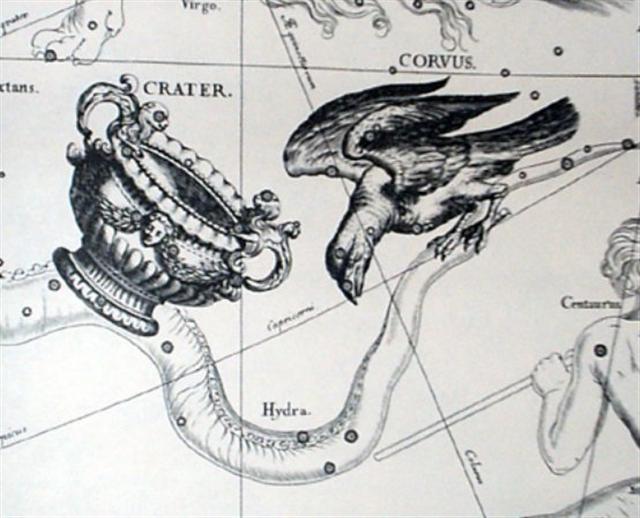 |
|
THE SUN: |
|
DEC 28 |
29 (363) |
- |
JAN 1 (65 - 64) |
2 |
|
March 2 (61) |
3
(31 + 28 + 3) |
4 (428 - 365 = 63) |
5
(246 + 183 = 429) |
6
(365 + 65) |
7
(80 + 351 = 431) |
|
ι Cephei (346.0),
λ Aquarii, γ Piscis Austrini, σ
Pegasi (346.5) |
SCHEAT AQUARII = δ Aquarii (347.0),
ρ
Pegasi (347.2),
δ
Piscis Austrini (347.4),
FOMALHAUT (Mouth of the Fish) =
α
Piscis Austrini,
τ
Gruis (347.8)
*306.0 = *347.4 - *41.4 |
FUM AL SAMAKAH (Mouth of the Fish)
=
β
Piscium
(348.3),
ζ
Gruis (348.5),
ο
Andromedae (348.9) |
Al Fargh al Mukdim-24 (Fore Spout)
/
Purva Bhādrapadā-26 (First of the
Blessed Feet)
/
House-13 (Pig)
SCHEAT PEGASI =
β
Pegasi,
π
Piscis Austrini (349.3),
κ
Gruis (349.4),
MARKAB PEGASI =
α
Pegasi
(349.5)
*308.0 = *349.4 - *41.4 |
23h (350.0 = 167.4 + 182.6)
υ, θ Gruis (350.0),
π Cephei (350.6), ι Gruis (350.9) |
SIMMAH = γ Piscium
(351.7) |
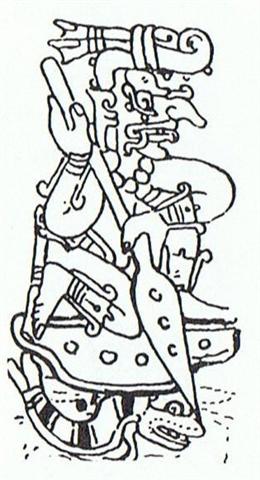 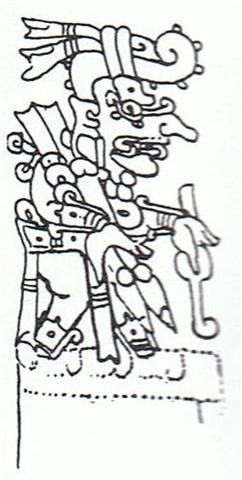  |
We must remember that when the current Sun positions
were reflected in the nakshatra Sooty Face of the Full Moon it gave the
Easter Islanders a Sooty Mirror image of where the months
north of the equator were according to the months south
of the equator:
... The Sun and the Moon were siblings -
a brother and a sister - without parents. Siqiniq
(the Sun) was staying all alone in an igloo. The camp would
hold festivities in the qaggiq. One day, as usual,
they started to hold a qaggiq early in evening when
it was dark. Someone rushed into Siqiniq's igloo and
blew out her qulliq at the same time. She was then
pinned down and molested. This happened a number of times
and Siqiniq was unable to find out who her attacker
was. Her cooking pot always hung over her qulliq.
When her attacker came again, she reached out and tried to
touch the pot but her lamp was out and it was completely
dark. Finally she managed to touch the pot. She then wiped
her sooty hands on the face of her aggressor.
After she had been molested once
again the aggressor left her igloo. She followed him to see
where he would go, hoping to finally find out who he was.
She saw him going to the qaggiq where the festivities
were being held. As she neared it she could hear people
laughing. Someone was saying: 'Taqqiq inutuarsiurasumut
aasit naatavinaaluk'. - Taqqiq (the Moon) has
been marked with soot as he has again been looking for
someone who might have been alone ...
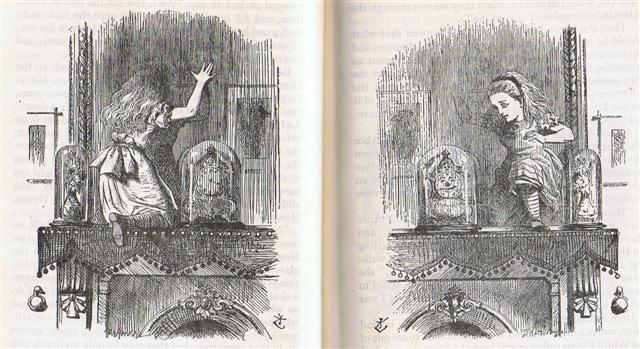
|
Full Moon |
*183 |
Sun |
|
*166 |
*349 |
|
Sept 3 (246 =
182 + 64) |
March 5 (429 = 365 + 64) |
... The Aztecs saw a good husband like a burning torch
leaving no smoke. Such a requirement cannot go hand in
hand with a fire which is burning on fresh boughs. The
wood must be dry. The 'smoking mirror', Tezcatlipoca,
is the opposite of Quetzalcoatl, the blue-green
quetzal serpent ...
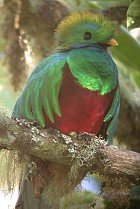
... Yesterday I learned from watching TV that
Popocatepetl, the active volcano close to Mexico
City, means the 'smoking mountain', i.e. the Aztecan
popoca means smoking. I take this as one more
example of how closely some key Polynesian ideas are
related to similar ones in other languages.
Tezcatlipoca ('the Smoking Mirror') was the 'tanist'
of Quetzalcoatl. When you pour water on a fire
smoke is produced ...

... Manu-tera, the Easter Island name for the
Sooty Tern,
means literally 'sunbird'. From this we take it as a
very likely, though there is no proof, that the tern
would have been seen as a symbol of the sun - just as
the falcon and the phoenix were symbols of the sun in
acient Egypt ...
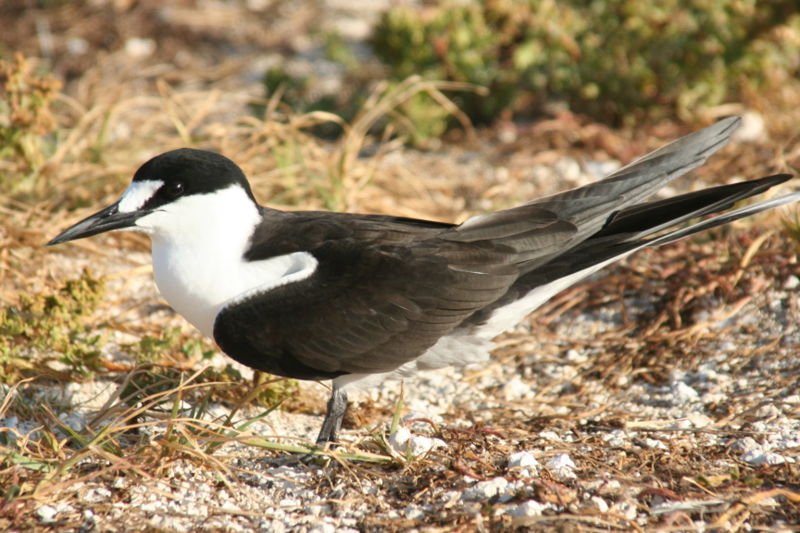
... Skulls with incised carvings,
imbued with power by Makemake, were placed in the
fowl house to promote the egg-laying capacity of the
occupants. It may seem a long call from the domestic
fowl to the sooty tern, but both are birds and lay eggs.
The sooty tern (manu tara) comes to breed in
large numbers in July or August off the southwestern
point formed by the crater of Rano-kao on three
rocky islets, of which the only one accessible to
swimmers is Motu-nui ...
If, for example, the Full Moon was seen at the beginning of the Square
in Ursa Major, then it meant the other end of the Trunk
must be with the Sun at the beginning of the Pegasus
Square, which north of the equator meant spring was
ahead. Thus the Square in Ursa Major, when observed at
the Full Moon, would correspond to half a year away in
the Sun circuit around the year, viz. where south of the
equator spring was ahead.
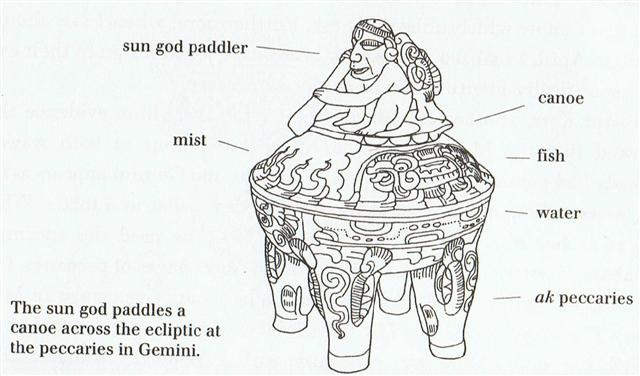
|





.jpg)





















